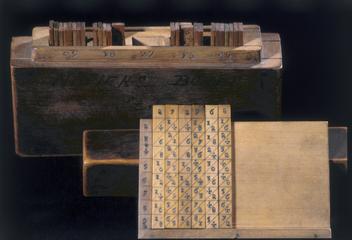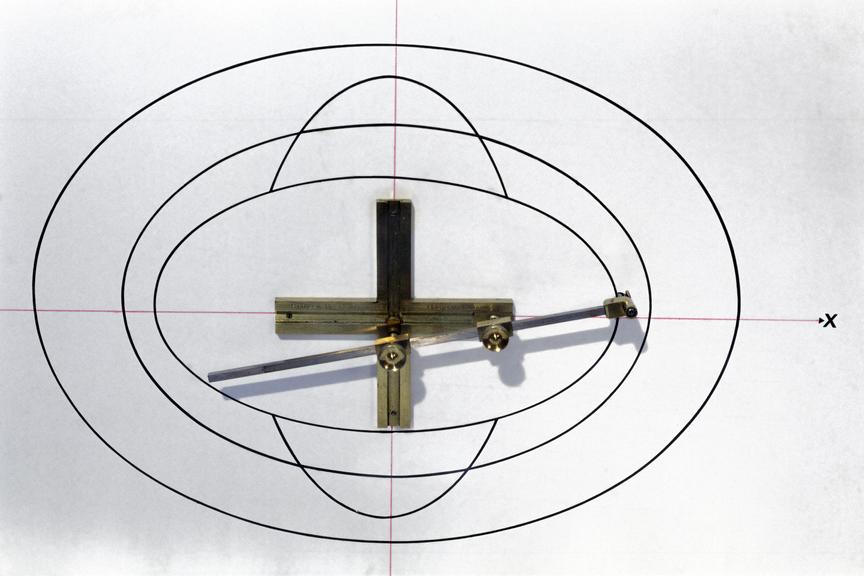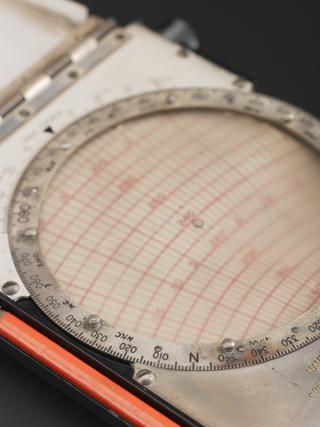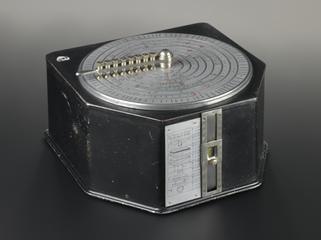
Elliptic trammel by W.F. Stanley, London, 1876.
- maker:
- William Ford Stanley

Elliptic trammel by W.F. Stanley, London, 1876.
The W.F Stanley company supplied easy-to-operate elliptic trammels for drawing ellipses from the 19th century to as late as 1960. An ellipse is one of five possible types of shapes resulting from slicing a cone and its observation is connected to astronomy and German mathematician and astronomer Johannes Kepler’s ground-breaking discovery of the planetary elliptical orbits around the sun in the 1600s.
This instrument is the simplest example of Stanley’s elliptic trammels and can draw any ellipse as long as the maximum length of its cross-piece. Its metal cross-shaped piece has two undercut grooves at right angles to each other and is fixed to the paper by needle-points underneath. Two sliders fitting in the grooves carry ‘’heads’’, through which passes a bar to which each head can be clamped. A pen or pencil is attached to the end of the bar. Engineers and architects would use such instruments for their drawings of arches and bridges up until their replacement by computer programmes.
Details
- Category:
- Mathematics
- Object Number:
- 1876-662
- type:
- trammel (elliptic) and drawing instrument
- credit:
- W.F. Stanley and Company




